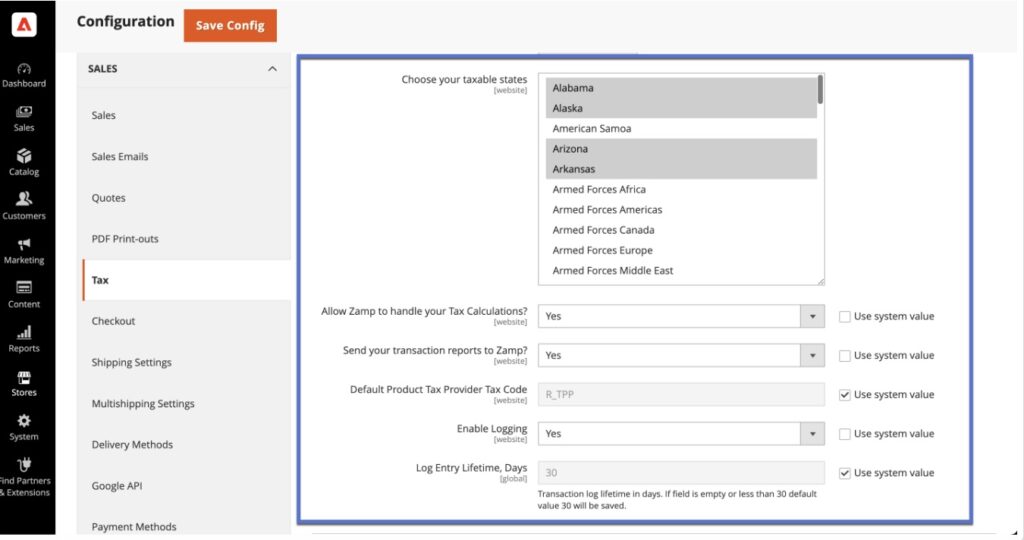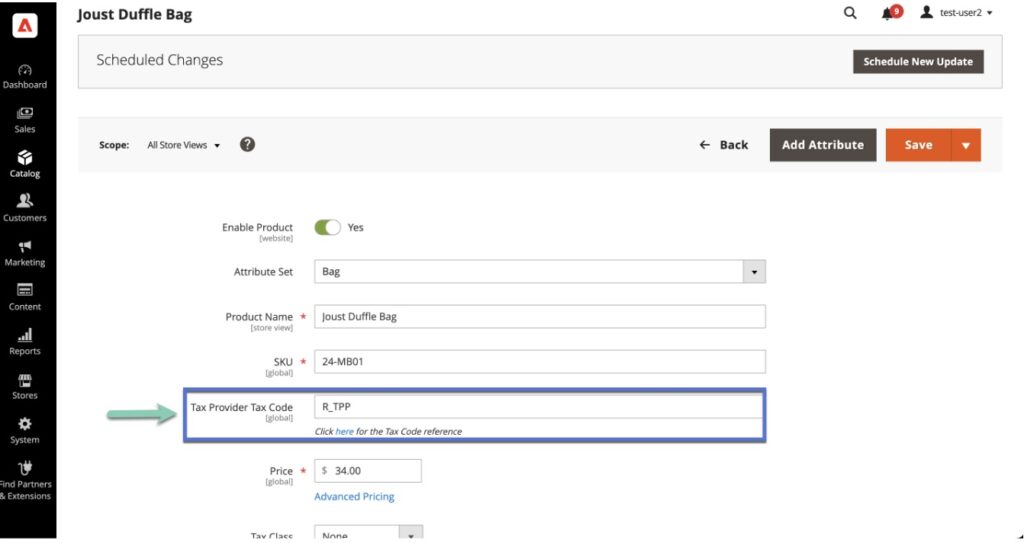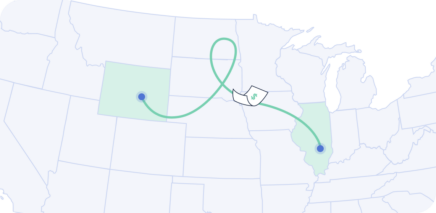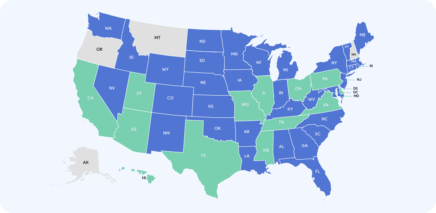Adobe Commerce Integration
Adobe Commerce (Magento) is an e-commerce development platform offering customizable features and integrations for businesses to manage their online stores.
Learn More- Zamp Learnings:
- Adobe Commerce vs. Magento 2
- Sales Tax for Adobe Commerce
- Does Adobe Commerce Collect Sales Tax?
- Zamp Tip
- How Sales Tax Works for Your Adobe Commerce Store
- Sales Tax Nexus and Your Business
- Zamp Tip
- How to Determine Product Taxability
- How to Set Up Sales Tax in Adobe Commerce
- Getting Started with Zamp for Adobe Commerce
- How to Install Zamp for Adobe Commerce
- Verifying the Installation for Zamp and Adobe Commerce
- Configuring Zamp for Adobe Commerce
- Module Activation
- API Credentials
- Default Tax Settings
- Logging Configuration
- Configuring Tax Calculations for Zamp and Adobe Commerce
- Taxable States Configuration
- Product Tax Codes
- Transaction Sync Configuration
- Automatic Transaction Reporting
- Zamp for Adobe Commerce
- Best Tax Compliance Practices for Adobe Commerce Sellers
- Adobe Commerce Sales Tax: Conclusion
- Why Choose Zamp?
Zamp Learnings:
- Adobe Commerce (Magento) does not automatically collect sales tax for sellers on the platform.
- Those with Adobe Commerce storefronts must set up their own sales tax settings to begin collecting after they reach a nexus threshold.
- Zamp created an API extension that enables seamless integration between Adobe Commerce and the software to help manage sales tax compliance.
More than 200,000 websites use Adobe Commerce (Magento) to run storefronts. The e-commerce development platform is known for its customizability and functionality regarding features and integrations, which help businesses of all sizes build and manage their online stores.
However, sales tax is not automatically handled for online sellers, which means they either need to manually set up their sales tax settings through Admin or use an automated sales tax software solution.
In this guide, we’ll explore what you need to know about Adobe Commerce integrations and provide guidance on how to stay sales tax compliant.
Book a call today
30-minute call
sales tax expert
off your plate
Adobe Commerce vs. Magento 2
When it comes to integrations with Adobe, there are two to be aware of — Magento 2 and Adobe Commerce. Magento was initially created as an e-commerce platform for small to medium-sized businesses but was acquired by Adobe in 2018.
Magento 2 is an open-source option that can be downloaded to meet a business’s needs. Companies can download the software for free but are more responsible for managing their site’s hosting, maintenance, and upgrades.
Adobe Commerce is an e-commerce platform that offers more cloud-based options and is highly scalable for growing companies. In addition, it also has more advanced features, including upgraded enhanced security, templates, and faster page loading speeds.
Sales Tax for Adobe Commerce
Sales tax can be highly volatile, as rules and regulations constantly change. It’s gotten even more difficult for businesses to know where to file sales tax returns with the introduction of economic nexus.
Companies must know when they hit a nexus threshold to register to collect sales tax in a state. Each state has different sales tax laws, making it challenging to navigate laws from one state or locality to another.
Does Adobe Commerce Collect Sales Tax?
Adobe Commerce is not a marketplace facilitator. This means the solution does not automatically collect and remit sales on your behalf. You’ll have to set up sales tax settings manually, including tax classes, calculation settings, and price and display settings at a minimum.
Zamp Tip
How Sales Tax Works for Your Adobe Commerce Store
Audits and hefty penalties are just some of the things that can happen if you fail to file sales tax returns in the US. You’ll need to know how sales tax works for your storefront and what options are available to help you streamline the process to stay compliant.
Free Download: 2025 Sales Tax Outlook
Sales tax is difficult to juggle with new changes made every year. That’s why we put together a 2025 Sales Tax Outlook with all the changes you need to ensure your business stays compliant.

Sales Tax Nexus and Your Business
Nexus can be complicated when it comes to understanding the different types and how they can impact sales tax for your business. There are two common ways to establish nexus:
- Physical nexus: This occurs when your company has a physical presence in a state, such as employees, a warehouse, or a building.
- Economic nexus: This happens when you meet the thresholds for sales activity in a state, which usually revolves around revenue and/or transactions.
Knowing where you have nexus can guide your compliance strategy for your business and help ensure you stay compliant.
Zamp Tip
How to Determine Product Taxability
In addition to nexus, you must determine whether your products are taxable or exempt. Each state has a list of taxable goods, and certain items are exempt depending on the product category.
For example, some states do not tax food, clothing, and textbooks. Staying on top of product taxability is vital for your business. After all, you don’t want to collect sales tax from customers on items you don’t need to.
How to Set Up Sales Tax in Adobe Commerce
You have two options for setting up sales tax for your Adobe Commerce storefront — manually or using an automated sales tax solution. Using sales tax software like Zamp allows for the following:
- Real-time sales tax calculations during checkout
- Support for multiple tax jurisdictions
- Automated transaction reporting to Zamp
- Historical transaction syncing
- Detailed transaction logging
- Tax-exempt customer management
The section below will explore how to set up Adobe Commerce with Zamp.
Getting Started with Zamp for Adobe Commerce
You will need a few things to install Zamp for Adobe Commerce, including checking system requirements and compatibility. To start, you will need to ensure you have:
- Adobe Commerce (Magento) 2.4x
- PHP 8.2.18 or higher
- Required Adobe Commerce modules
You will also need to ensure that you have valid Zamp API credentials provided to you during onboarding.
How to Install Zamp for Adobe Commerce
There are a few ways to install Zamp for Adobe Commerce, including manually and through Composer. See our instructions here to install the Zamp Tax extension through either manual installation or Composer.
Verifying the Installation for Zamp and Adobe Commerce
To verify installation, check that the module is listed and enabled — bin/magento module:status ATF_Zamp. You’ll then verify that the module appears in the admin panel:
- Navigate to Stores > Configuration > Sales > Tax
- Look for the “Zamp Configuration” section

- Check for successful database updates:
- The following tables should be created:
- zamp_transaction_log
- Queue_zamp_historical_transaction_sync
- Product attribute tax_provider_tax_code should be added
- Customer attribute tax_exempt_code should be added
- The following tables should be created:
You’ll then need to verify for clean logs and check for any errors related to ATF_Zamp.
After installation, you’ll need to configure your Zamp API credentials in the Admin panel before the extension becomes functional.
Configuring Zamp for Adobe Commerce
To configure Zamp for Adobe Commerce, go to the Adobe Commerce admin panel under Stores > Configuration > Sales > Tax > Zamp Configuration.

Module Activation
For Module Activation, you will want to:
- Enable/disable the module using the “Enable setting”
- Use the configuration path: tax/zamp_configuration/active
API Credentials
Follow these steps for API credentials:
- Enter your Zamp API token in the “API Token” field
- Click “Test Connection” to verify your credentials
- The API token is stored encrypted in the database
Default Tax Settings
- Configure the default product tax code in “Default Product Tax Provider Tax Code”
- Default value: R_TPP
- This code is to be used when there are no specific tax codes set on a product
Logging Configuration
- Enable/disable logging with the "Enable Logging" setting
- Set the log retention period in "Log Entry Lifetime, Days."
- Minimum value: 30 days
- If empty or less than 30, it defaults to 30 days
Configuring Tax Calculations for Zamp and Adobe Commerce
To enable tax calculations, use “Allow Zamp to handle your tax calculations?” and use the configuration path tax/zamp_configuration/allow_tax_calculation.
You’ll then need to configure taxable states, product tax codes, and more (which will be discussed below).
Taxable States Configuration
- Select applicable states in "Choose your taxable states."
- Multiple states can be selected
- Tax calculations will only be performed for selected states
- Required when tax calculation is enabled
Product Tax Codes
- Set product-specific tax codes in each product's configuration
- Default code will be used if no product-specific code is set

Transaction Sync Configuration
- Enable transaction reporting using "Send your transaction reports to Zamp?"
- Configuration path: tax/zamp_configuration/send_transactions
Automatic Transaction Reporting
When enabled, the following events trigger automatic transaction reporting:
- Invoice creation (sales_order_invoice_save_after )
- Credit memo creation (sales_order_creditmemo_save_after )
- Transaction data includes:
- Line items with tax codes
- Customer tax exemption information
- Shipping and handling charges
- Discounts and adjustments
All configuration settings require the module to be enabled (tax/zamp_configuration/active) to take effect.
Zamp for Adobe Commerce
Best Tax Compliance Practices for Adobe Commerce Sellers
Keeping on top of sales tax compliance for one storefront can be challenging, but selling across many channels becomes even more difficult.
Here are some best practices to consider to stay compliant as an Adobe Commerce Seller:
| 1. Automate the sales tax process | It’s no secret that sales tax software can take your workflows to the next level. This is because it can calculate sales tax rates, create reports, and remit taxes based on sales tax, reducing the risk of human error. |
| 2. Consolidate your reporting | The best sales tax software provides concise data through new integrations, making everything easy and accessible. Your data should be summarized, and receive notifications when your returns have been filed. |
| 3. Track sales tax changes | To provide a good customer experience, keep on top of sales tax changes for your customers. You can sign up for updates on tax regulations from the states where you operate. |
| 4. Assess your sales tax processes | Find a schedule that works for you to regularly review your sales tax requirements and tax settings in Adobe Commerce. This can be done bi-weekly, monthly, or quarterly. |
| 5. Keep detailed records | You should maintain accurate records for all Adobe Commerce experiences and sales. This is important in the event of an audit from a state’s Department of Revenue (DoR) or the IRS. |
Adobe Commerce Sales Tax: Conclusion
Adobe Commerce can level up a storefront, especially for businesses looking to grow and scale. However, as with any platform, there are things to consider regarding sales tax compliance. An automated solution offers more flexibility and ensures accurate sales tax calculations during the checkout process for your customers.
Why Choose Zamp?
Zamp consistently puts its customers first, and it shows. We’ve been named a Major Player in the Small, Mid, and Enterprise SUT markets in IDC’s 2024 IDC MarketScape for Worldwide SaaS and Cloud-enabled Tax Automation Software, along with being featured in the top ten best sales tax software companies by taxtech500.
We help businesses outsource the entire sales tax compliance cycle. Our platform provides:
- Hands-off onboarding: We set up everything for you and ensure it’s done right.
- Full sales tax compliance service: We offer nexus tracking, registrations, roof-top accurate calculations, product taxability research, mapping, reporting, and filing. All this is included in our pricing model — one fee for everything.
- Proactive account support: We are always looking for changes in sales tax requirements, and our team is happy to answer any questions you may have.
How can we help you take your sales tax compliance to the next level? Schedule a call with an expert on our team below.
Book a call today
30-minute call
sales tax expert
off your plate
Adobe Commerce Integration: FAQ
Zamp stands out in the sales tax software industry because we always put our customers first. Our success stories prove that companies are happy about taking sales tax off their plate and our pricing model.
Yes, Adobe Commerce offers specific settings that allow you to calculate sales tax. However, they must be set up manually.
No, Adobe Commerce does not automatically collect sales tax for sellers as it is not a marketplace facilitator.
- Zamp Learnings:
- Adobe Commerce vs. Magento 2
- Sales Tax for Adobe Commerce
- Does Adobe Commerce Collect Sales Tax?
- Zamp Tip
- How Sales Tax Works for Your Adobe Commerce Store
- Sales Tax Nexus and Your Business
- Zamp Tip
- How to Determine Product Taxability
- How to Set Up Sales Tax in Adobe Commerce
- Getting Started with Zamp for Adobe Commerce
- How to Install Zamp for Adobe Commerce
- Verifying the Installation for Zamp and Adobe Commerce
- Configuring Zamp for Adobe Commerce
- Module Activation
- API Credentials
- Default Tax Settings
- Logging Configuration
- Configuring Tax Calculations for Zamp and Adobe Commerce
- Taxable States Configuration
- Product Tax Codes
- Transaction Sync Configuration
- Automatic Transaction Reporting
- Zamp for Adobe Commerce
- Best Tax Compliance Practices for Adobe Commerce Sellers
- Adobe Commerce Sales Tax: Conclusion
- Why Choose Zamp?




